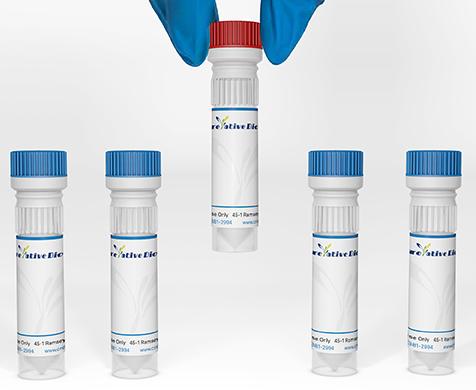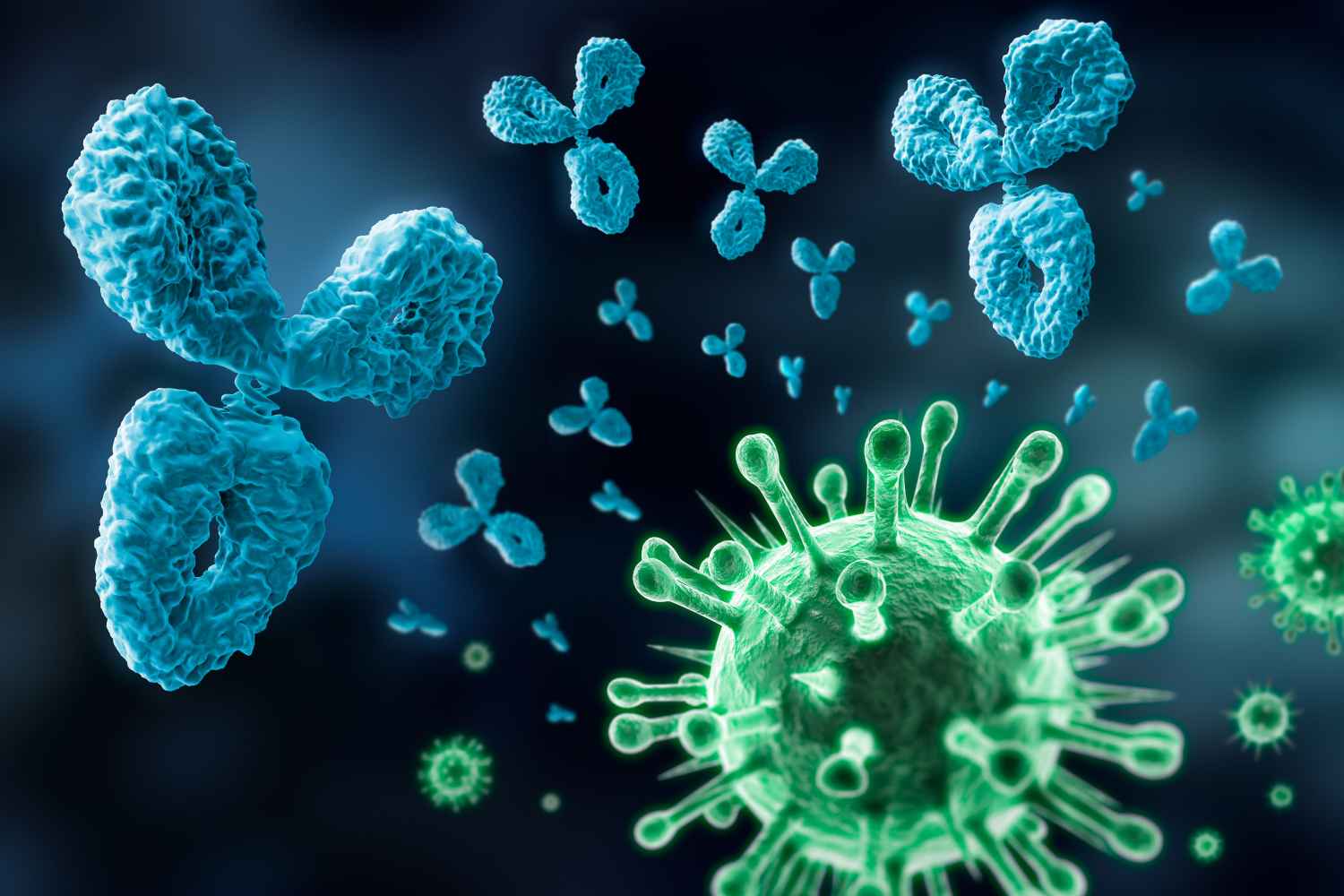ACVR1
Activins are dimeric growth and differentiation factors which belong to the transforming growth factor-beta (TGF-beta) superfamily of structurally related signaling proteins. Activins signal through a heteromeric complex of receptor serine kinases which include at least two type I ( I and IB) and two type II (II and IIB) receptors. These receptors are all transmembrane proteins, composed of a ligand-binding extracellular domain with cysteine-rich region, a transmembrane domain, and a cytoplasmic domain with predicted serine/threonine specificity. Type I receptors are essential for signaling; and type II receptors are required for binding ligands and for expression of type I receptors. Type I and II receptors form a stable complex after ligand binding, resulting in phosphorylation of type I receptors by type II receptors. This gene encodes activin A type I receptor which signals a particular transcriptional response in concert with activin type II receptors. Mutations in this gene are associated with fibrodysplasia ossificans progressive. [provided by RefSeq]
Full Name
activin A receptor, type I
Function
On ligand binding, forms a receptor complex consisting of two type II and two type I transmembrane serine/threonine kinases. Type II receptors phosphorylate and activate type I receptors which autophosphorylate, then bind and activate SMAD transcriptional regulators. Receptor for activin. May be involved for left-right pattern formation during embryogenesis (By similarity).
Biological Process
Activin receptor signaling pathway
Acute inflammatory response
Angiogenesis
Atrial septum primum morphogenesis
Atrioventricular valve morphogenesis
BMP signaling pathway
BMP signaling pathway involved in heart development
Branching involved in blood vessel morphogenesis
Cardiac muscle cell fate commitment
Cellular response to BMP stimulus
Cellular response to growth factor stimulus
Determination of left/right symmetry
Dorsal/ventral pattern formation
Embryonic heart tube morphogenesis
Endocardial cushion cell fate commitment
Endocardial cushion fusion
Endocardial cushion morphogenesis
G1/S transition of mitotic cell cycle
Gastrulation with mouth forming second
Germ cell development
Heart development
In utero embryonic development
Mesoderm formation
Mitral valve morphogenesis
Negative regulation of activin receptor signaling pathway
Negative regulation of extrinsic apoptotic signaling pathway
Negative regulation of signal transduction
Neural crest cell migration
Pathway-restricted SMAD protein phosphorylation
Peptidyl-threonine phosphorylation
Pharyngeal system development
Positive regulation of bone mineralization
Positive regulation of cell migration
Positive regulation of determination of dorsal identity
Positive regulation of epithelial to mesenchymal transition involved in endocardial cushion formation
Positive regulation of osteoblast differentiation
Positive regulation of pathway-restricted SMAD protein phosphorylation
Positive regulation of peptidyl-tyrosine phosphorylation
Positive regulation of transcription, DNA-templated
Positive regulation of transcription by RNA polymerase II
Protein phosphorylation
Regulation of ossification
Smooth muscle cell differentiation
Transforming growth factor beta receptor signaling pathway
Ventricular septum morphogenesis
Acute inflammatory response
Angiogenesis
Atrial septum primum morphogenesis
Atrioventricular valve morphogenesis
BMP signaling pathway
BMP signaling pathway involved in heart development
Branching involved in blood vessel morphogenesis
Cardiac muscle cell fate commitment
Cellular response to BMP stimulus
Cellular response to growth factor stimulus
Determination of left/right symmetry
Dorsal/ventral pattern formation
Embryonic heart tube morphogenesis
Endocardial cushion cell fate commitment
Endocardial cushion fusion
Endocardial cushion morphogenesis
G1/S transition of mitotic cell cycle
Gastrulation with mouth forming second
Germ cell development
Heart development
In utero embryonic development
Mesoderm formation
Mitral valve morphogenesis
Negative regulation of activin receptor signaling pathway
Negative regulation of extrinsic apoptotic signaling pathway
Negative regulation of signal transduction
Neural crest cell migration
Pathway-restricted SMAD protein phosphorylation
Peptidyl-threonine phosphorylation
Pharyngeal system development
Positive regulation of bone mineralization
Positive regulation of cell migration
Positive regulation of determination of dorsal identity
Positive regulation of epithelial to mesenchymal transition involved in endocardial cushion formation
Positive regulation of osteoblast differentiation
Positive regulation of pathway-restricted SMAD protein phosphorylation
Positive regulation of peptidyl-tyrosine phosphorylation
Positive regulation of transcription, DNA-templated
Positive regulation of transcription by RNA polymerase II
Protein phosphorylation
Regulation of ossification
Smooth muscle cell differentiation
Transforming growth factor beta receptor signaling pathway
Ventricular septum morphogenesis
Cellular Location
Membrane
Involvement in disease
Fibrodysplasia ossificans progressiva (FOP): A rare autosomal dominant connective tissue disorder resulting in skeletal malformations and progressive extraskeletal ossification. Heterotopic ossification begins in childhood and can be induced by trauma or may occur without warning. Bone formation is episodic and progressive, leading to a debilitating ankylosis of all major joints of the axial and appendicular skeleton, rendering movement impossible.
Topology
Extracellular: 21-123 aa
Helical: 124-146 aa
Cytoplasmic: 147-509 aa
Helical: 124-146 aa
Cytoplasmic: 147-509 aa
View more
Anti-ACVR1 antibodies
+ Filters
 Loading...
Loading...
Target: ACVR1
Host: Mouse
Antibody Isotype: IgG1
Specificity: Human
Clone: V2-179668
Application*: WB, IC
Target: ACVR1
Host: Mouse
Antibody Isotype: IgG1
Specificity: Human
Clone: V2-179667
Application*: WB, IH
Target: ACVR1
Host: Mouse
Antibody Isotype: IgG1, κ
Specificity: Human
Clone: V2-179666
Application*: E, WB
Target: ACVR1
Host: Mouse
Antibody Isotype: IgG1
Specificity: Human
Clone: CBT3453
Application*: IH, IC, F
Target: ACVR1
Host: Mouse
Antibody Isotype: IgG1
Specificity: Human
Clone: CBT3613
Application*: F
More Infomation
Hot products 
-
Mouse Anti-CTCF Recombinant Antibody (CBFYC-2371) (CBMAB-C2443-FY)

-
Mouse Anti-CCNH Recombinant Antibody (CBFYC-1054) (CBMAB-C1111-FY)

-
Mouse Anti-AKT1 Recombinant Antibody (V2-180546) (CBMAB-A2070-YC)

-
Rat Anti-ADGRE4 Recombinant Antibody (V2-160163) (CBMAB-F0011-CQ)

-
Rat Anti-ADAM10 Recombinant Antibody (V2-179741) (CBMAB-A1103-YC)

-
Mouse Anti-AK4 Recombinant Antibody (V2-180419) (CBMAB-A1891-YC)

-
Mouse Anti-HTLV-1 gp46 Recombinant Antibody (CBMW-H1006) (CBMAB-V208-1154-FY)

-
Mouse Anti-ARIH1 Recombinant Antibody (C-7) (CBMAB-A3563-YC)

-
Mouse Anti-CCDC6 Recombinant Antibody (CBXC-0106) (CBMAB-C5397-CQ)

-
Mouse Anti-C1QC Recombinant Antibody (CBFYC-0600) (CBMAB-C0654-FY)

-
Mouse Anti-CD24 Recombinant Antibody (HIS50) (CBMAB-C10123-LY)

-
Mouse Anti-CGAS Recombinant Antibody (CBFYM-0995) (CBMAB-M1146-FY)

-
Mouse Anti-CCT6A/B Recombinant Antibody (CBXC-0168) (CBMAB-C5570-CQ)

-
Mouse Anti-BCL6 Recombinant Antibody (CBYY-0435) (CBMAB-0437-YY)

-
Mouse Anti-ADIPOR2 Recombinant Antibody (V2-179983) (CBMAB-A1369-YC)

-
Mouse Anti-APP Recombinant Antibody (DE2B4) (CBMAB-1122-CN)

-
Mouse Anti-ABCA3 Recombinant Antibody (V2-178911) (CBMAB-A0145-YC)

-
Mouse Anti-8-oxoguanine Recombinant Antibody (V2-7697) (CBMAB-1869CQ)

-
Mouse Anti-C4B Recombinant Antibody (CBYY-C2996) (CBMAB-C4439-YY)

-
Mouse Anti-CASQ1 Recombinant Antibody (CBFYC-0863) (CBMAB-C0918-FY)

For Research Use Only. Not For Clinical Use.
(P): Predicted
* Abbreviations
- AActivation
- AGAgonist
- APApoptosis
- BBlocking
- BABioassay
- BIBioimaging
- CImmunohistochemistry-Frozen Sections
- CIChromatin Immunoprecipitation
- CTCytotoxicity
- CSCostimulation
- DDepletion
- DBDot Blot
- EELISA
- ECELISA(Cap)
- EDELISA(Det)
- ESELISpot
- EMElectron Microscopy
- FFlow Cytometry
- FNFunction Assay
- GSGel Supershift
- IInhibition
- IAEnzyme Immunoassay
- ICImmunocytochemistry
- IDImmunodiffusion
- IEImmunoelectrophoresis
- IFImmunofluorescence
- IHImmunohistochemistry
- IMImmunomicroscopy
- IOImmunoassay
- IPImmunoprecipitation
- ISIntracellular Staining for Flow Cytometry
- LALuminex Assay
- LFLateral Flow Immunoassay
- MMicroarray
- MCMass Cytometry/CyTOF
- MDMeDIP
- MSElectrophoretic Mobility Shift Assay
- NNeutralization
- PImmunohistologyp-Paraffin Sections
- PAPeptide Array
- PEPeptide ELISA
- PLProximity Ligation Assay
- RRadioimmunoassay
- SStimulation
- SESandwich ELISA
- SHIn situ hybridization
- TCTissue Culture
- WBWestern Blot

Online Inquiry





